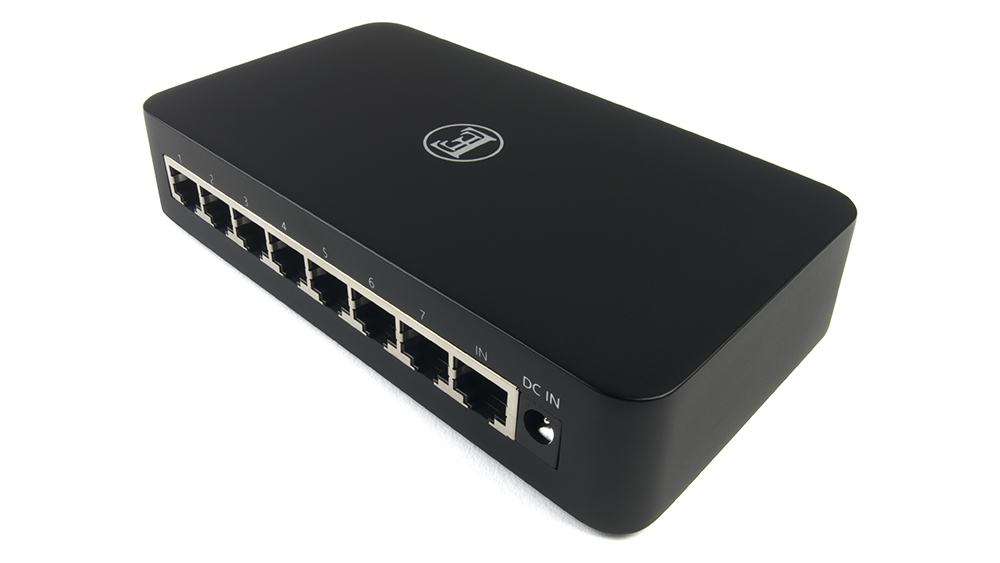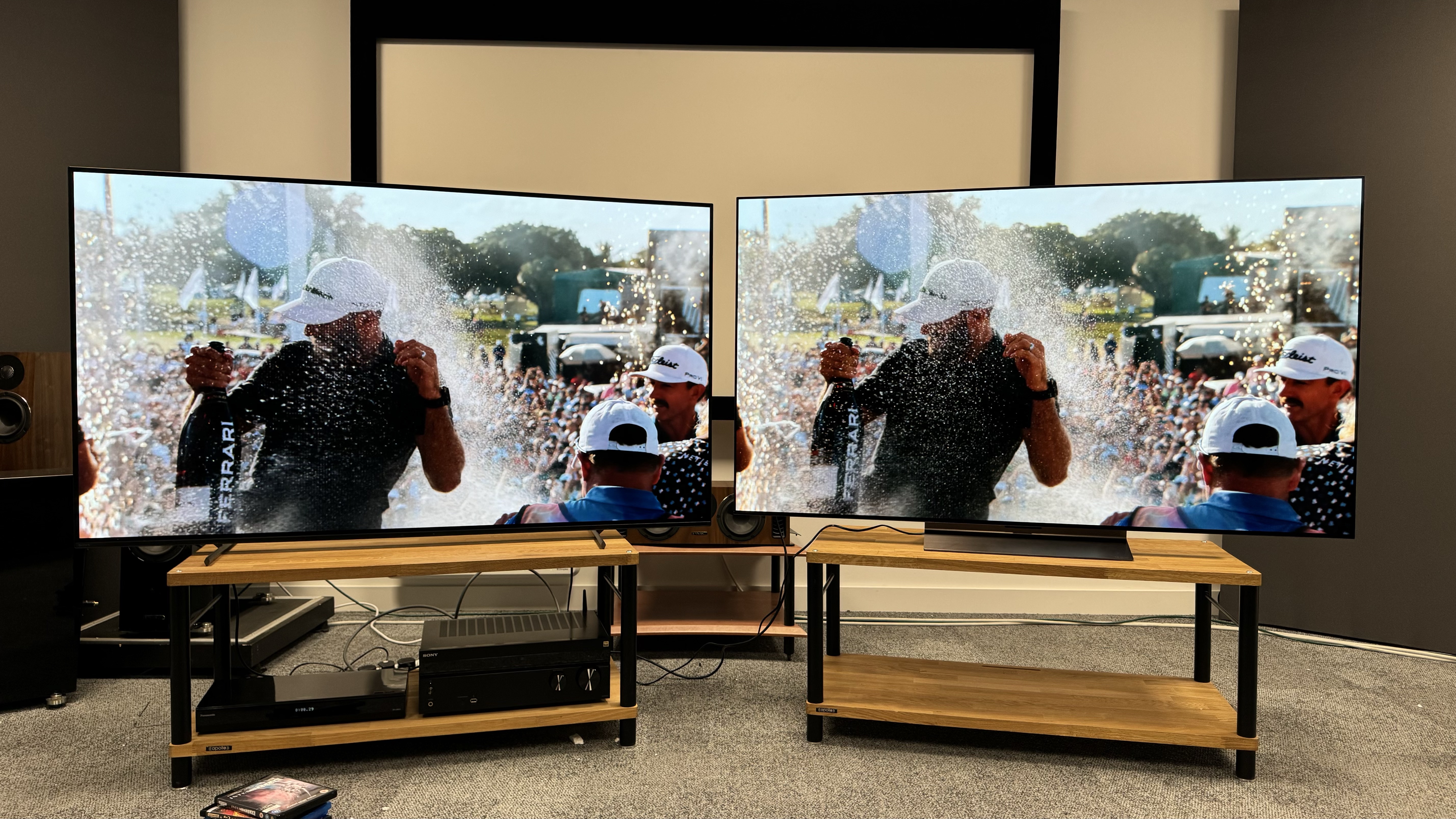Chord Company's reborn English Electric launches its first product
Following the British brand's relaunch by the cable company earlier this year, its 8Switch network switch is now on sale

Back at The Bristol Hi-Fi Show 2020 in February, Chord Company announced it was relaunching English Electric* to front its audio electronics business. It debuted the first English Electric product, the 8Switch hi-fi grade network switch – which, three months later, is now on sale.
The eight-port 8Switch has been specifically designed to act as a filter for streamed audio to remove unwanted noise and thus preserve music quality. Supposedly, the 8Switch lowers jitter by up to 90 per cent.
The 8Switch, which features eight 100/1000 Base-T gigabit Ethernet ports, is driven by a customised crystal oscillator that English Electric says allows for a more stable transmission of music data.
It uses a power supply and clock circuit that each have two electrical noise-isolation circuits for stabling network signals, as well as EMI (Electromagnetic Interference) absorber for further reducing noise from the digital circuit.
That's all housed in an aluminium enclosure to protect it from acoustic and electrical noise, with damped feet also doing their bit to reduce the effects of unwanted mechanical vibration. English Electric’s engineers even set out to improve the power signal by using a high-quality adapter.
The English Electric 8Switch, which launches alongside a dedicated English Electric website, costs £450 and includes a 0.75m Chord Company C-Stream Ethernet cable worth £40.
*Founded in 1986, English Electric (as it became known from 1918) grew into a manufacturer of electrical equipment and machinery, specialising in motors, transformers, railway locomotives and traction equipment, before expanding into consumer electronics, computers and aviation years later. After several mergers, the name was lost in the late '60s – only to be reborn in the audio sector here in 2020, over 50 years later!
The latest hi-fi, home cinema and tech news, reviews, buying advice and deals, direct to your inbox.
MORE:
See all Chord Company cable reviews
Becky is the managing editor of What Hi-Fi? and, since her recent move to Melbourne, also the editor of the brand's sister magazines Down Under – Australian Hi-Fi and Audio Esoterica. During her 11+ years in the hi-fi industry, she has reviewed all manner of audio gear, from budget amplifiers to high-end speakers, and particularly specialises in headphones and head-fi devices. In her spare time, Becky can often be found running, watching Liverpool FC and horror movies, and hunting for gluten-free cake.
-
lacuna £450?! I thought I was being a bit decadent by spending an extra £2 for the aluminium case on my 8 port TP-Link switch but I feel better knowing it was still £433 cheaper than this one!!Reply -
Big Aura Typo!Reply
Founded in 1986, English Electric (as it became known from 1918) grew into a manufacturer of electrical equipment and machinery, specialising in motors, transformers, railway locomotives and traction equipment, before expanding into consumer electronics, computers and aviation years later. After several mergers, the name was lost in the late '60s – only to be reborn in the audio sector here in 2020, over 50 years later! -
HappySounds This cannot be anything other than snake oil, surely?Reply
Let's go through the process of getting some music from one device to another over a network. The sound is digitised into whatever format one chooses - and here there is definite opportunity to lose or gain quality. But once it is digitised the parcelling up and unpacking of the digital stream into ethernet IP packets is carried out by the devices at either end. They are in control of how accurately or otherwise this process is performed and this is very well understood science. If this did not work correctly then we would not be able to use ethernet as a transport medium for anything as files would be corrupted right left and centre. That doesn't happen! There is error correction and error detection built in to the ethernet standard.
The switch sits in the middle of all the kit and has a minimal contribution to make, assuming it is doing its job correctly. It just receives packets and passes them on, and the bandwidth of any switch is generally vastly greater than is necessary in a home environment.
Where is the evidence that this ridiculously expensive and vastly over-engineered device makes any measurable difference at all to the sound when compared A to B?
Come on, What HiFi - where is your critical and sceptical journalistic approach when it's needed? Don't just swallow the hype - test the assertions! That's what journalism is all about. If you don't do this then companies can offer anything at any price and make mugs out of us all.
If you can measure a difference then I am prepared to eat my words, but I struggle to understand how it would be possible. -
killdozer Of course, it's snake oil and anyone who understands networks can prove it to be so. Measuring is so 21st century. What HiFi, though not terrible, is not big on a critical and sceptical journalistic approach. Even something it can control, site usability which is in the customer's interest, is sacrificed to the commercial pressure of clickbait. So many predictable reviews though, as much influenced by manufacturer and price. Do the maths, if Chord makes a £300 profit for no rope at all that money can be spent on advertising...Reply -
Friesiansam Reply
Every site which finds itself under the control of Future Publishing, goes the same way...killdozer said:Even something it can control, site usability which is in the customer's interest, is sacrificed to the commercial pressure of clickbait.
One of the main "advantages" of this device appears to be reduced jitter but, surely any decent DAC (or DAC equipped streamer, amp etc) will have it's own clock and kill jitter itself. -
Hifiman I remember when magazines (WHF included) used to test different HDMI cables and wax lyrical about how the ludicrously expensive ones led to improved picture quality. Until it was proven beyond doubt that they didn’t affect the data being transferred. I wonder if the same might hold true for this product.Reply

